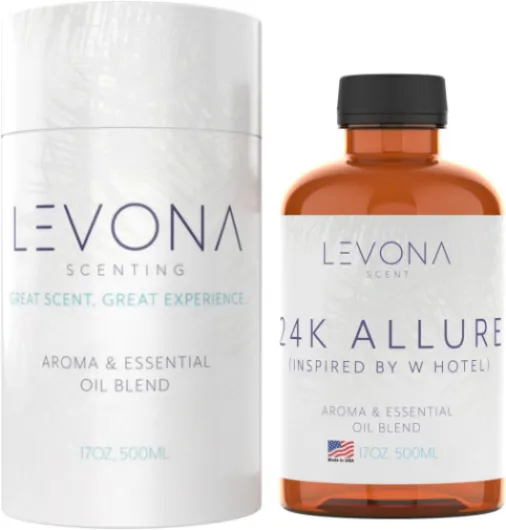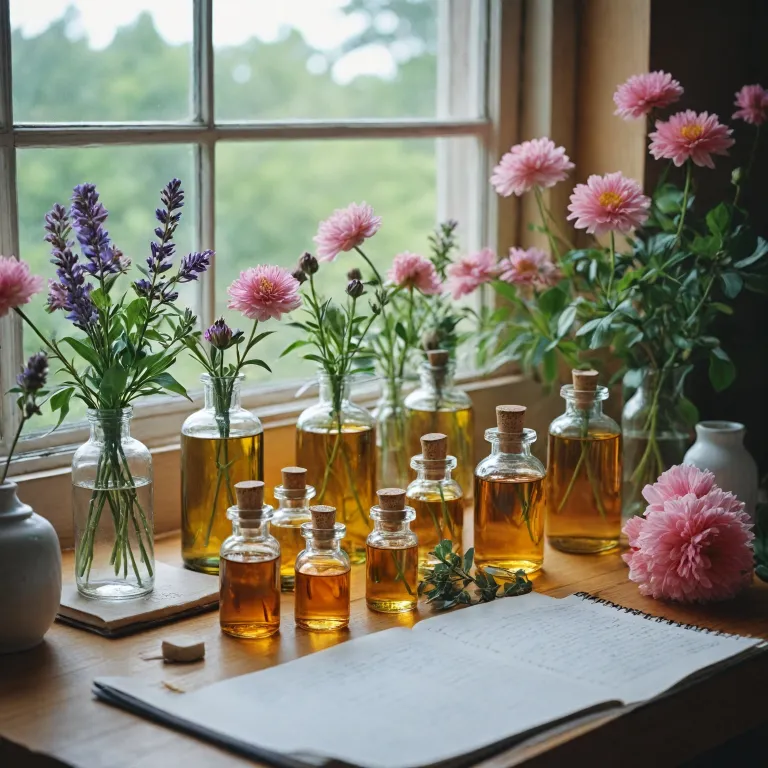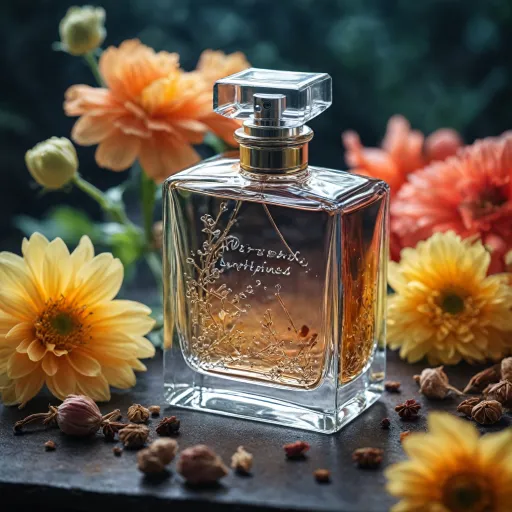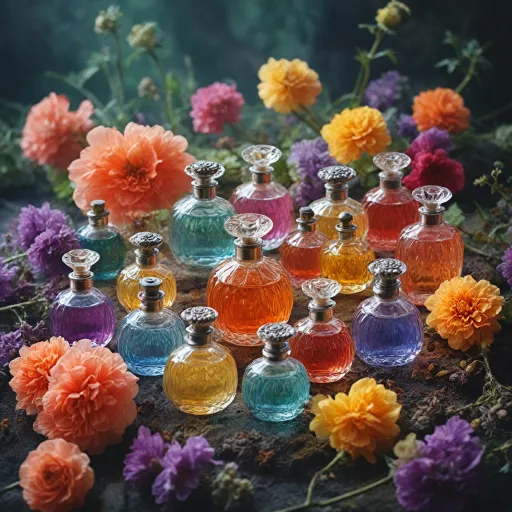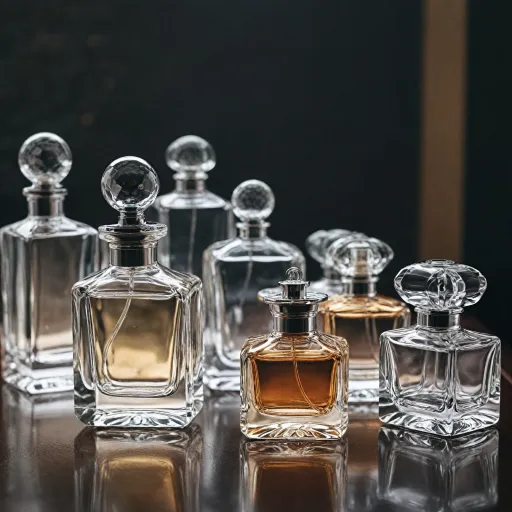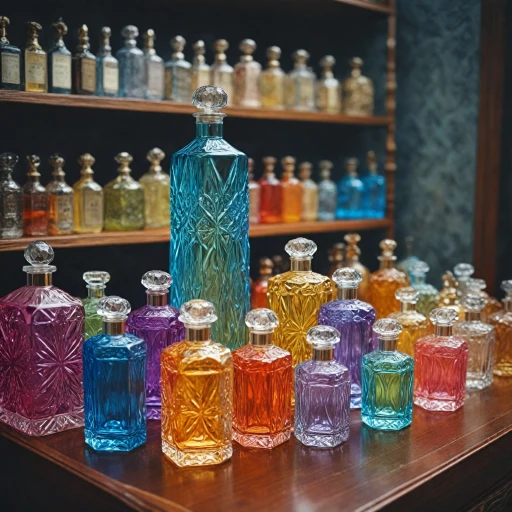
Understanding what makes a fragrance oil skin safe
What Defines a Skin Safe Fragrance Oil?
When choosing a fragrance oil for your perfume creations, the term "skin safe" is more than just a marketing phrase. It means the oil has been formulated and tested to minimize the risk of irritation or allergic reactions when applied to the skin. Skin safe fragrance oils are specifically designed for use in personal care products like bath body items, soaps, and lotions. They are different from oils intended for candles or diffusers, which may contain ingredients not suitable for direct skin contact.
Natural vs. Synthetic: Understanding Your Options
Fragrance oils can be based on essential oils, synthetic compounds, or a blend of both. Essential oils, such as oil lavender or lemongrass fragrance, are derived from plants and are often perceived as a natural choice. However, not all plant-based options are automatically safe for skin. Some essential oils can be potent irritants if not properly diluted. Synthetic fragrance oils, like vanilla fragrance or rose fragrance, are engineered to mimic natural aromas and can be formulated to reduce allergenic components. The key is to choose oils labeled as skin safe and intended for bath body or soap making.
Usage Rates and Application Types
Each type fragrance oil comes with recommended usage rates, which indicate how much oil can be safely used in a product. For example, vanilla buttercream or cake fragrance oils may have different safe usage rates for soaps versus lotions. Always check the manufacturer's guidelines, especially if you are blending your own perfumes or making soap at home. Overuse of even a safe fragrance oil can increase the risk of skin sensitivity.
Why Ingredient Transparency Matters
Ingredient transparency is crucial when selecting fragrance oils for personal care. Look for suppliers who provide detailed information about their oils, including whether they are soap safe or suitable for candle making. This helps you avoid common irritants and allergens, which will be discussed further in this article. For a deeper dive into how fragrance concentration affects safety and performance, explore this guide to fragrance concentration.
Why skin safety matters for fragrance lovers
Why Prioritizing Skin Safety Enhances Your Fragrance Experience
For anyone passionate about fragrance—whether you’re blending your own vanilla buttercream perfume or searching for the perfect rose fragrance oil—skin safety is more than a technical detail. It’s the foundation of a positive, enjoyable, and healthy relationship with your favorite scents. When you choose skin safe fragrance oils, you’re not just protecting your skin; you’re ensuring that every aroma, from lemongrass fragrance to rich vanilla, can be enjoyed without worry.
Fragrance oils, whether plant-based, synthetic, or essential, interact directly with your body. The skin is your largest organ, and it absorbs what you put on it. Using oils that aren’t designed for personal care can lead to irritation, allergic reactions, or even long-term sensitivity. This is especially important for those who love experimenting with bath body products, soap making, or candle making and want to use their creations on the skin.
- Personal comfort: Skin safe options reduce the risk of redness, itching, or rashes, making your daily routine more comfortable.
- Long-term health: Consistent use of safe fragrance oils helps prevent the buildup of irritants that can cause chronic skin issues.
- Creative freedom: Knowing your oils are safe lets you explore a wider range of aromas, from oil coconut to ginger fragrance, in soaps, candles, and perfumes.
It’s also important to consider usage rates. Even the safest oil lavender or vanilla fragrance can cause problems if used in excess. Each type fragrance has recommended limits for different applications, such as soap safe or bath body products. Always check these guidelines before you blend or apply.
For those who love to craft their own blends, understanding the difference between essential oils and synthetic fragrance oils is key. Some essential oils, while natural, can be potent irritants. Meanwhile, high-quality synthetic options are often formulated to be gentle on the skin. The right choice depends on your skin type, the intended use—like cake fragrance for a sweet body mist or rose fragrance for a luxurious soap—and your personal preferences.
Ultimately, prioritizing skin safety means you can enjoy the full spectrum of fragrance without compromise. For more insights into the world of oil perfumery and how to make the most of your fragrance journey, explore the art and allure of women’s oil perfumery.
Common allergens and irritants in fragrance oils
Spotting Potential Triggers in Fragrance Oils
When choosing a fragrance oil for your perfume, bath body products, or even for candle making, it’s crucial to understand what might cause irritation or allergic reactions. Many fragrance oils—whether essential, synthetic, or plant-based—contain ingredients that can be problematic for sensitive skin. Here’s what to watch for when you want your creations to be truly skin safe.
- Common Allergens: Some of the most frequent culprits include compounds like limonene, linalool, and citral. These naturally occur in oils such as lemongrass fragrance, oil lavender, and even in some vanilla fragrance blends. While these ingredients add beautiful aroma, they can trigger reactions in certain people.
- Potential Irritants: Synthetic fragrance oils, especially those used in cake fragrance or vanilla buttercream options, may contain phthalates or other additives. These can cause redness, itching, or discomfort when applied directly to the skin or used in personal care products.
- Plant-Based Doesn’t Always Mean Safe: Essential oils like ginger fragrance or rose fragrance oil are popular in soap making and bath body products. However, their high concentration can be harsh on the skin if not properly diluted or if usage rates exceed recommended levels.
- Soap Safe vs. Skin Safe: Not all oils labeled as soap safe are automatically safe for direct skin contact. Always check if the fragrance oil is specifically rated for personal care, not just for candles or soaps.
It’s also important to consider the type of product you’re making. For example, a fragrance oil coconut blend might be perfect for candles but not ideal for a leave-on body lotion. Always review the recommended usage rates and safety data provided by suppliers.
For a deeper dive into how fragrance oil ingredients are stored and presented, check out this guide on the art and allure of fragrance oil bottles. Understanding packaging can also help you choose safe fragrance options for your next project.
By being aware of these common allergens and irritants, you can make more informed choices, ensuring your perfume creations are not only aromatic but also gentle on the skin.
How regulations shape the safety of fragrance oils
How Standards and Guidelines Protect Your Skin
When choosing fragrance oils for your perfume creations, understanding the regulatory landscape is essential. Regulations exist to ensure that the oils you use in personal care, bath body products, soaps, and candles are as safe as possible for skin contact. These rules help you identify which options are suitable for direct application and which are best reserved for candle making or soap making. The International Fragrance Association (IFRA) sets global standards for the safe use of fragrance oils. IFRA guidelines specify maximum usage rates for different product types—like body oils, soaps, and bath products—based on scientific research. For example, a vanilla fragrance or rose fragrance oil may have different safe usage rates depending on whether it’s used in a body lotion, soap, or candle. These rates are designed to minimize the risk of skin irritation or sensitization. In addition to IFRA, national agencies such as the FDA in the United States or the European Commission in the EU regulate the labeling and safety of fragrance oils in personal care products. They require clear ingredient disclosure, especially for common allergens found in both essential oils and synthetic fragrance oils. This transparency helps you choose the right type fragrance oil for your needs, whether you’re looking for plant based options like oil lavender or ginger fragrance, or more complex blends like vanilla buttercream or cake fragrance. It’s important to note that not all fragrance oils labeled as ‘skin safe’ are automatically suitable for every application. Some oils, such as lemongrass fragrance or oil coconut, may be safe in soaps but not in leave-on products like perfumes or lotions. Always check the recommended usage rates and ensure the oil is marked as safe fragrance for your intended use. For those blending at home, look for suppliers who provide IFRA certificates and allergen declarations for their fragrance oils. This documentation gives you confidence that your chosen aroma—whether it’s a classic rose, a creamy vanilla, or a fresh ginger—meets established safety standards for skin contact. By following these regulations and guidelines, you can craft beautiful, skin safe perfumes and bath body products with peace of mind.Tips for testing fragrance oils on your skin
Patch Testing: The First Step to Safer Perfume Creations
Before you commit to using any fragrance oil on your skin or in your bath body products, patch testing is a must. Even if a fragrance is labeled as skin safe, individual sensitivities can vary. To patch test, apply a small diluted amount of the oil (about 1% in a carrier like oil coconut or unscented lotion) to a discreet area of your inner arm. Cover it and wait 24 hours. If you notice redness, itching, or irritation, that type fragrance oil may not be suitable for your body or personal care creations.
Understanding Usage Rates and Dilution
Every fragrance oil, whether it’s a vanilla fragrance, rose fragrance, or something more exotic like ginger fragrance, has recommended usage rates for different applications. These rates are set by organizations like IFRA (International Fragrance Association) and help ensure your blends are safe for skin contact. For example, oils designed for candle making or soaps may have different safe usage percentages. Always check the supplier’s guidelines for each oil and never exceed the recommended rate, especially for bath body or soap making projects.
Choosing the Right Base for Testing
When testing fragrance oils, the base you use matters. For skin safe fragrance testing, opt for neutral carriers such as oil coconut, jojoba, or unscented lotion. Avoid using alcohol or undiluted oils directly on the skin, as this can cause unnecessary irritation and skew your results. If you’re testing for soap safe or candle safe options, use a small batch of your intended base (like unscented soap or candle wax) to see how the aroma performs and if any irritation occurs during use.
Tracking Your Reactions and Results
- Keep a simple log of each fragrance oil you test, noting the type, dilution rate, and any skin reactions.
- Compare how essential oils, plant based, and synthetic options feel on your skin.
- Note if certain scents, like vanilla buttercream, lemongrass fragrance, or rose, trigger any discomfort.
This record helps you choose the best safe fragrance options for your skin and future perfume or soap making projects.
When to Seek Alternatives
If you experience any irritation, consider switching to a different type fragrance or exploring essential oils or plant based alternatives. Some people find synthetic vanilla or cake fragrance less irritating than natural extracts, while others may prefer gentle options like oil lavender. Always prioritize your skin’s health when selecting fragrance oils for personal care, candles, or soaps.
Blending your own skin safe perfumes at home
Crafting Your Signature Blend at Home
Blending your own skin safe perfumes is a rewarding process for fragrance lovers who want to personalize their scent experience. With the right fragrance oils and careful attention to safety, you can create unique aromas for your body, bath, or even soaps and candles.Choosing the Right Ingredients
Start by selecting skin safe fragrance oils. Look for oils labeled as safe for personal care, bath body, or soap making. Options include:- Essential oils like oil lavender, lemongrass fragrance, or ginger fragrance for a plant-based aroma
- Synthetic fragrance oils such as vanilla fragrance, rose fragrance, or cake fragrance for more complex or lasting scents
- Blends like vanilla buttercream or oil coconut for gourmand or tropical notes
Understanding Usage Rates
Each type fragrance oil has recommended usage rates for different applications. These rates help ensure the oil is safe for skin contact. For example, the maximum usage rate for a vanilla fragrance in body lotions may differ from its rate in candle making. Always refer to the supplier’s guidelines and never exceed the suggested percentage.Mixing and Testing Your Blend
When blending, start with small amounts. Combine a few drops of each chosen oil in a glass container. Swirl gently and let the blend rest for a few hours. This allows the aroma to develop and helps you assess the overall scent profile. Before applying to your body, perform a patch test. Dab a small amount of the diluted blend on your inner arm and wait 24 hours to check for any irritation. This step is crucial, especially if you’re using new oils or have sensitive skin.Tips for Safe and Creative Blending
- Use a carrier oil like fractionated coconut oil to dilute your fragrance oils for skin application
- Keep notes on the type and amount of each oil used to replicate or tweak your blend later
- Explore layering different safe fragrance oils, such as combining rose fragrance with vanilla for a soft floral-gourmand effect
- Store your finished blend in a dark glass bottle to preserve the aroma


